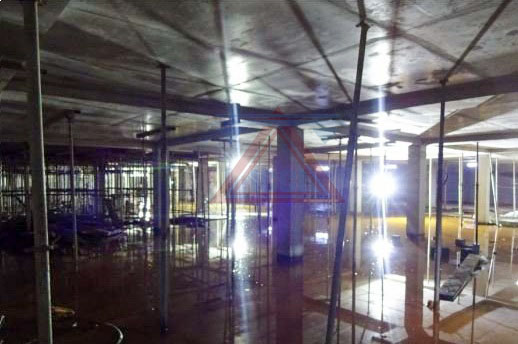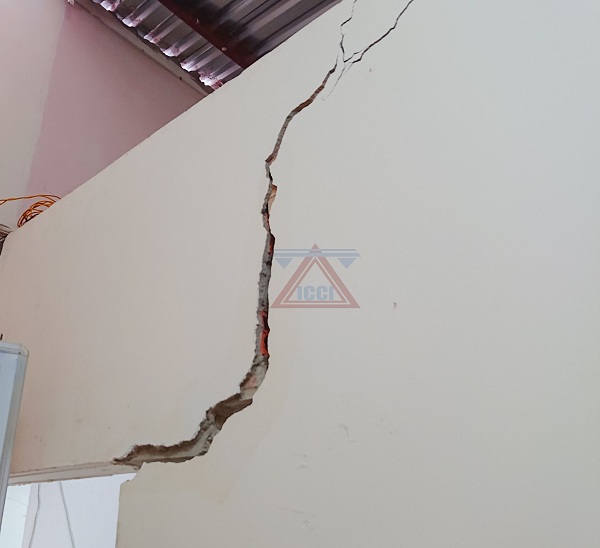Ensuring safety of adjacent structures during basement construction
Currently, urban land availability is scarce, necessitating the construction of basement levels. However, during basement construction, numerous incidents occur in neighboring structures, including collapses, settlements, cracks, and tilting
The primary causes of incidents are as follows:
- Insufficient load-bearing capacity of retaining wall structures: A common fault is leaning due to inadequate bracing.
- Porous concrete walls during construction, failing to prevent groundwater and sand flow.
- Inability of retaining walls to stop groundwater and sand: The design utilizing drilled piles as barriers penetrating through a sand layer causes sand and water to flow through the gap between two piles (as depicted in Figure 2). This type of pile is suitable only for non-waterlogged clay or sand.
- Subsidence resulting from the disparity in groundwater levels in weak soil areas. Despite the watertight and structurally sound wall, groundwater from adjacent properties seeps through the wall's base into the basement level (as shown in Figure 3). The most effective method to prevent groundwater is to install sheet piles penetrating into the clay layer. However, issues persist if the sheet pile's base is in the sand layer.
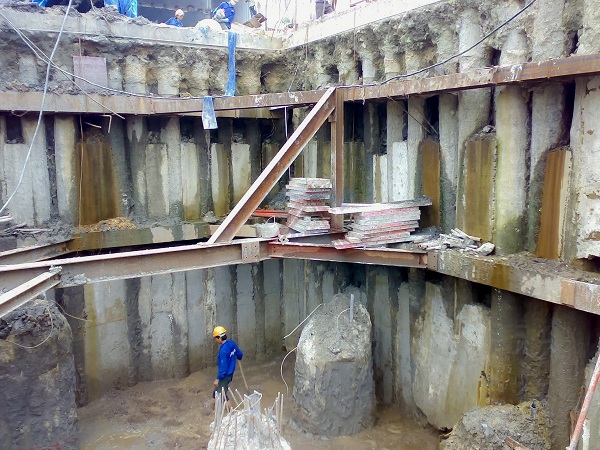 Figure 2: Using drilled piles as earth retaining walls makes water seepage prevention very challengingc
Figure 2: Using drilled piles as earth retaining walls makes water seepage prevention very challengingc
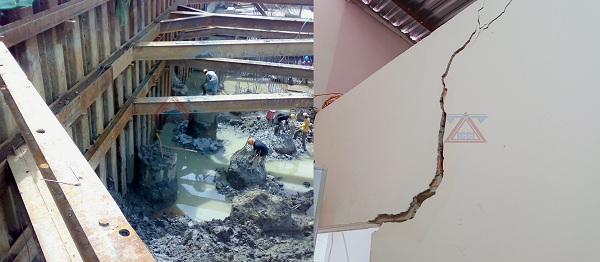 Figure 3: Despite employing effective methods to prevent soil and water seepage, neighboring structures still experience settlement and cracking
Figure 3: Despite employing effective methods to prevent soil and water seepage, neighboring structures still experience settlement and cracking
To minimize damages: Preventing sand and water from neighboring construction areas seeping into the basement isn’t a simple task for underground construction design and execution experts. A successful outcome involves collaboration between geotechnical drilling units, barrier wall design, construction, and displacement monitoring entities during pre-construction and throughout the construction phase.
- Before commencing construction: Survey the current state of nearby structures, particularly noting locations of cracks, settlement, and install monitoring points to track settlement and lateral displacement at potential vulnerable spots prone to subsidence or tilting
The adjacent construction site showing signs of settlement and cracking
-During groundwater lowering: Results for settlement and inclination should be obtained within 15 to 30 days.
- During excavation: Weekly monitoring is essential. If localized settlement is detected, construction should temporarily halt to implement appropriate measures.
Experience shows that some projects lack pre-construction surveying. Excavation for foundations often leads to disputes. In certain cases, neighboring structures experience tilting before tunneling begins. Moreover, collapse incidents can be prevented with ongoing monitoring of settlement and inclination
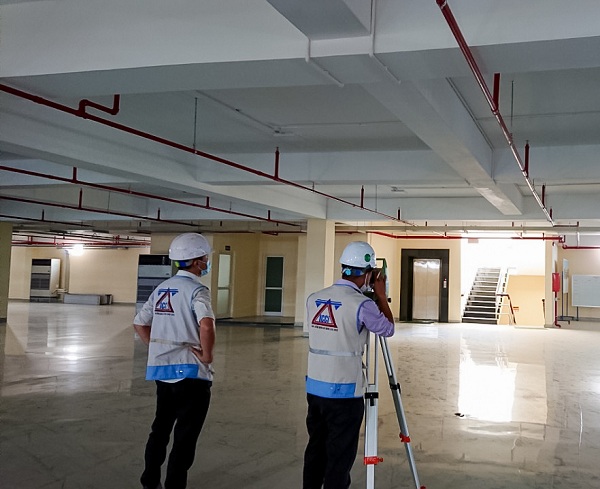
The images showing structural displacement measurements
In 2007, International Construction Consultancy and Inspection Joint Stock Company (ICCI) registered for the construction quality inspection sector, obtaining Business Registration Certificate No. 0305296785 issued by the Department of Planning and Investment.
Proudly boasting over 16 years of experience, ICCI is recognized as a reputable construction inspection company. Even after project completion, ICCI continues to safeguard its clients' rights. Customer trust and satisfaction serve as our driving force for development and enhancement to meet job demands.
ICCI's Implementation Criteria:
1. Work Progress: Swift and adaptable.
2. Work Quality: Adhering to Ministry of Construction regulations, ensuring the best outcomes.
3. Cost Efficiency: Corresponding, economical, effective, and reflective of the value invested by our clients.
ICCI's capabilities and its team of engineers comply with the regulations stipulated by the competent state authorities.
- The team of engineers at ICCI is professionally trained and holds professional certificates matching the level and type of projects they engage in.
- ICCI owns the LAS-XD 203 laboratory, a competitive advantage over other firms in the market that often have to contract other units for sample testing. Having its own laboratory allows ICCI to proactively control quality, shorten timelines, and optimize costs.
- In 2017, ICCI was recognized by the Ministry of Construction's Department of Construction Activities Management as one of the first construction inspection companies meeting the qualifications for Grade I construction inspection capacity. By 2018 and 2019, ICCI participated in significant projects such as Landmark 81, the Carina apartment fire incident, as well as various offices and workshops across different fields. As of 2023, ICCI has contributed to 4,386 projects across 56 provinces and cities nationwide.
ICCI has been involved in inspecting numerous Grade I and Grade II projects nationwide
Capacity profile: download the file here
Contact ICCI via hotline - 0903994577 - dungtvkd@icci.vn - icci@icci.vn if your project requires workshop inspection, construction inspection, encounters unwanted incidents during construction or usage, or needs advice on construction-related matters. With our expertise and experience, ICCI ensures the highest quality and economic value for our clients
INTERNATIONAL CONSTRUCTION INSPECTION CONSULTANT JOINT STOCK COMPANY


 Vietnames
Vietnames English
English
